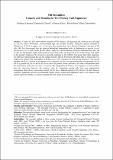Files in this item
Titi semantics : context and meaning in Titi monkey call sequences
Item metadata
| dc.contributor.author | Schlenker, Philippe | |
| dc.contributor.author | Chemla, Emmanuel | |
| dc.contributor.author | Cäsar, Cristiane | |
| dc.contributor.author | Ryder, Robin | |
| dc.contributor.author | Zuberbuehler, Klaus | |
| dc.date.accessioned | 2017-04-27T23:33:36Z | |
| dc.date.available | 2017-04-27T23:33:36Z | |
| dc.date.issued | 2017-02 | |
| dc.identifier | 240912401 | |
| dc.identifier | 144ef89d-e233-4944-9b64-e3957f29eb75 | |
| dc.identifier | 84964521164 | |
| dc.identifier | 000389989400007 | |
| dc.identifier.citation | Schlenker , P , Chemla , E , Cäsar , C , Ryder , R & Zuberbuehler , K 2017 , ' Titi semantics : context and meaning in Titi monkey call sequences ' , Natural Language and Linguistic Theory , vol. 35 , no. 1 , pp. 271-298 . https://doi.org/10.1007/s11049-016-9337-9 | en |
| dc.identifier.issn | 0167-806X | |
| dc.identifier.other | ORCID: /0000-0001-8378-088X/work/64360673 | |
| dc.identifier.uri | https://hdl.handle.net/10023/10675 | |
| dc.description | Grant acknowledgements: Cäsar: The research leading to these results received funding from the CAPES-Brazil, FAPEMIG-Brazil, S.B. LEAKEY TRUST and the University of St Andrews. Chemla and Schlenker: Research by Schlenker and Chemla was conducted at Institut d’Etudes Cognitives, Ecole Normale Supérieure – PSL Research University. Institut d’Etudes Cognitives is supported by grants ANR-10-LABX-0087 IEC et ANR-10-IDEX-0001-02 PSL. Schlenker: The research leading to these results received funding from the European Research Council under the European Union’s Seventh Framework Programme (FP/2007-2013) / ERC Grant Agreement n°324115- FRONTSEM (PI:Schlenker). Zuberbühler: The research leading to these results received funding from the European Research Council under ERC grant ‘Prilang 283871’ and also from the Swiss National Science Foundation under grant ‘FN 310030_143359/1’. | en |
| dc.description.abstract | Cäsar et al. (2013) show that the structure of Titi monkey call sequences can, with just two call types (A and B), reflect information about predator type and predator location. Using the general methods of Schlenker et al. (2014, 2016, to appear), we ask what these observations show about the 'linguistic' structure of Titi calls. We first demonstrate that the simplest behavioral assumptions make it challenging to provide lexical specifications for A- and B-calls: B-calls rather clearly have the distribution of highly underspecified calls; but A-calls are also found in highly heterogeneous contexts (e.g. they are triggered by 'cat in the canopy' and 'raptor on the ground' situations). We discuss two possible solutions to the problem. One posits that entire sequences are endowed with meanings that are not compositionally derived from their individual parts (a related idea was proposed by Arnold and Zuberbühler to analyze pyow-hack sequences in Putty-nosed monkeys). The second solution, which we consider to be superior, takes sequences to have no structure besides concatenation: the Bcall is a general call, the A-call is used for serious non-ground threats, and each call reflects information about the environment at the time at which it is uttered. The composition of Cäsar et al.'s sequences is seen to follow from the interaction between call meaning, rules of competition among calls, and more sophisticated assumptions about the environmental context. In the end, a detailed analysis of the division of labor between semantics, pragmatics and the environmental context yields a simple and explanatory analysis of sequences that initially seemed to display a complex mapping between syntax and semantics. | |
| dc.format.extent | 747980 | |
| dc.language.iso | eng | |
| dc.relation.ispartof | Natural Language and Linguistic Theory | en |
| dc.subject | Semantics | en |
| dc.subject | Pragmatics | en |
| dc.subject | Monkey linguistics | en |
| dc.subject | BF Psychology | en |
| dc.subject | QL Zoology | en |
| dc.subject | NDAS | en |
| dc.subject.lcc | BF | en |
| dc.subject.lcc | QL | en |
| dc.title | Titi semantics : context and meaning in Titi monkey call sequences | en |
| dc.type | Journal article | en |
| dc.contributor.institution | University of St Andrews. School of Psychology and Neuroscience | en |
| dc.contributor.institution | University of St Andrews. Institute of Behavioural and Neural Sciences | en |
| dc.contributor.institution | University of St Andrews. Centre for Social Learning & Cognitive Evolution | en |
| dc.identifier.doi | 10.1007/s11049-016-9337-9 | |
| dc.description.status | Peer reviewed | en |
| dc.date.embargoedUntil | 2017-04-27 |
This item appears in the following Collection(s)
Items in the St Andrews Research Repository are protected by copyright, with all rights reserved, unless otherwise indicated.

